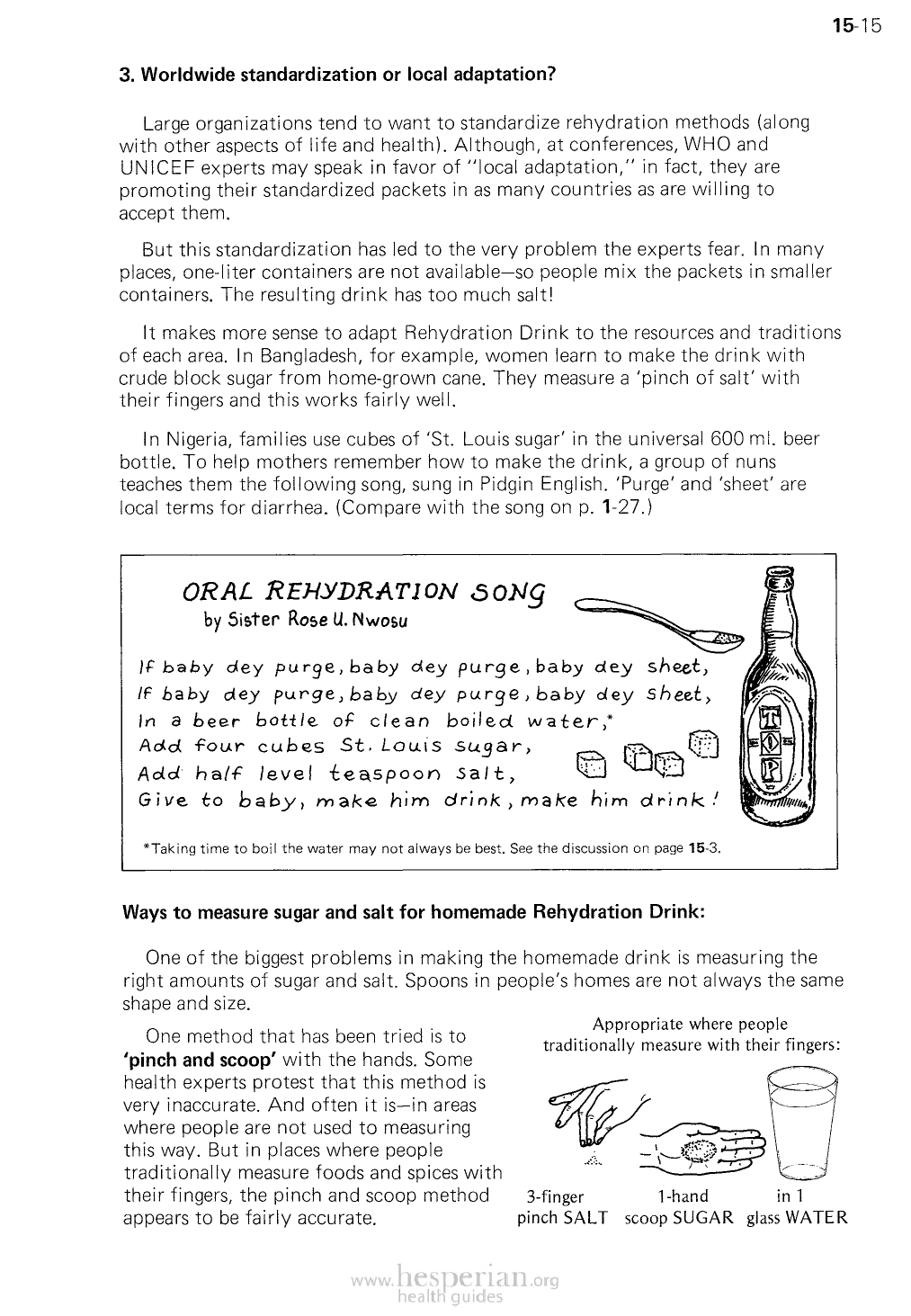
15-15
3. Worldwide standardization or local adaptation?
Large organizations tend to want to standardize rehydration methods (along
with other aspects of life and health). Although, at conferences, WHO and
UNICEF experts may speak in favor of “local adaptation,” in fact, they are
promoting their standardized packets in as many countries as are willing to
accept them.
But this standardization has led to the very problem the experts fear. In many
places, one-liter containers are not available—so people mix the packets in smaller
containers. The resulting drink has too much salt!
It makes more sense to adapt Rehydration Drink to the resources and traditions
of each area. In Bangladesh, for example, women learn to make the drink with
crude block sugar from home-grown cane. They measure a ‘pinch of salt’ with their
fingers and this works fairly well.
In Nigeria, families use cubes of ‘St. Louis sugar’ in the universal 600 ml. beer
bottle. To help mothers remember how to make the drink, a group of nuns teaches
them the following song, sung in Pidgin English. ‘Purge’ and ‘sheet’ are local terms
for diarrhea. (Compare with the song on p. 1-27.)
*Taking time to boil the water may not always be best. See the discussion on page 15.3
Ways to measure sugar and salt for homemade Rehydration Drink:
One of the biggest problems in making the homemade drink is measuring the right
amounts of sugar and salt. Spoons in people’s homes are not always the same shape
and size.
One method that has been tried is to
‘pinch and scoop’ with the hands. Some
health experts protest that this method is
very inaccurate. And often it is—in areas
Appropriate where people traditionally
measure with their fingers:
where people are not used to measuring
this way. But in places where people
traditionally measure foods and spices with
their fingers, the pinch and scoop method
appears to be fairly accurate.
3-finger
1-hand
in 1
pinch SALT scoop SUGAR glass WATER